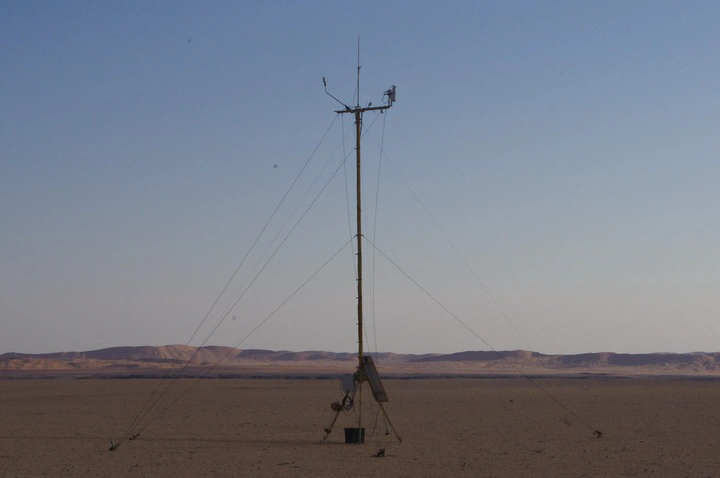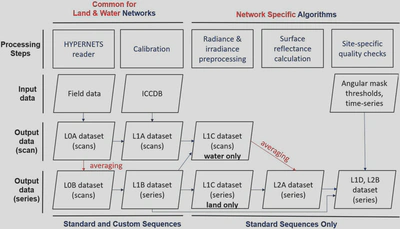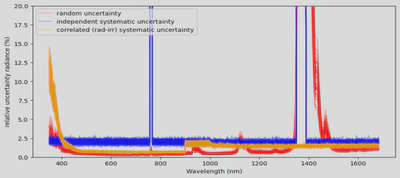CoMet Toolkit used in HYPERNETS Processor
 Image credit: Unsplash
Image credit: Unsplash🎈 Background
The LANDHYPERNET and WATERHYPERNET networks (which together make up the HYPERNETS network) consist of a set of autonomous hyperspectral spectroradiometers (HYPSTAR®) acquiring fiducial reference measurements of surface reflectance at various sites covering a wide range of surface types (both land and water) for use in satellite Earth observation validation and remote sensing applications.
The HYPERNETS_PROCESSOR is a Python software package to process the HYPERNETS in-situ hyperspectral raw data to reflectance and other variables.
🗸 Aims
In order to achieve fiducial reference measurement quality, and be optimally useful as a satellite validation reference, uncertainties need to be propagated through each step of the HYPERNETS processing chain, taking into account temporal and spectral error-covariance.
📋 Data
The HYPERNETS instruments measure downwelling hemispherical irradiance, and upwelling radiance. The raw data is provided as digital numbers, and combined with gains and non-linearity coefficients from Lab calibrations. The irradiance and radiance data are combined to calculate reflectance. These data are stored in different product files from L0-L2B.

🗸 Uncertainties
Three uncertainty contributions are tracked throughout the processing.
Random uncertainty: Uncertainty component arising from the noise in the measurements, which does not have any error-correlation between different wavelengths or different repeated measurements (scans/series/sequences).
Systematic independent uncertainty: Uncertainty component combining a range of different uncertainty contributions in the calibration. Only the components for which the errors are not correlated between radiance and irradiance are included.
Systematic uncertainty correlated between radiance and irradiance: Uncertainty component combining a range of different uncertainty contributions in the calibration. Only the components for which the errors are correlated between radiance and irradiance are included. This error-correlation means this component will become negligible when taking the ratio of radiance and irradiance (i.e., in the L2A reflectance products), which is why we separate it from the systematic independent uncertainty.
The two systematic uncertainty components are both based on lab calibrations. Since the same lab calibration is used within the HYPERNETS_ PROCESSOR for repeated measurements (scans/series/ sequences), the errors in the systematic uncertainty components are assumed to be fully systematic (errorcorrelation made up of ones) with respect to different scans/series/sequences. With respect to wavelength, we combine the different error-correlations of the different contributions and calculate a custom error-correlation matrix between the different wavelengths.
CoMet Setup
The HYPERNETS_PROCESSOR uses a Monte Carlo (MC) approach, to propagate uncertainties and error-correlations between product levels. This MC approach is implemented using punpy.
The HYPERNETS products themselves are stored as digital effects tables using obsarray.
Results
An example of the propagated uncertainties on the HYPERNETS radiances is shown below.

These uncertainties can be propagated throughout further processing chains (see e.g. this example)
Summary of Findings
The HYPERNETS_processor is operationally producing product files stored as digital effects tables. Uniquely for this type of processing, multiple different types of uncertainty (including error-correlations) are propagated through each of the processing levels.
These uncertainties have been very useful for the validation of satellite data (e.g. FLEX, CHIME, ENMAP, S2, …).
Future Work
There are a number of uncertainty components that are still missing from the HYPERNETS uncertainty budget (currently a placeholder uncertainty of 2% is added instead). Dedicated studies will be performed to better quantify each of the missing components.